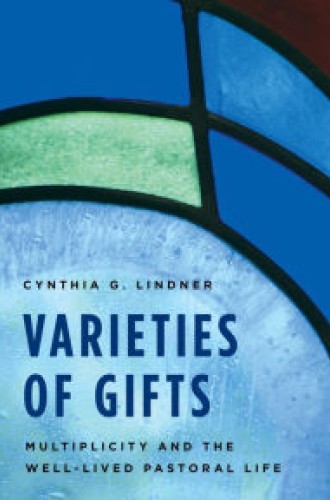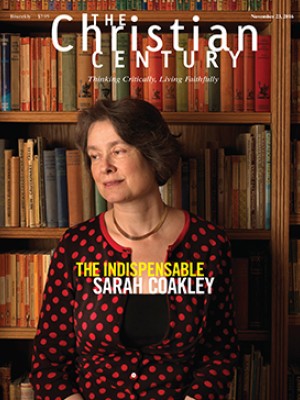Horse doctors and weather prophets were among the many roles assumed by black preachers after the Civil War, writes W. E. B. Du Bois. In those days, congregations were community centers, and the multiple leadership roles of clergy were obvious. Multiplicity was taken for granted. Not so today.
This is why we need Cynthia Lindner’s study of 21st-century pastors, which demonstrates the value of pastors drawing from multiple internal energy sources in order to exercise their gifts in multiple forms. Lindner, who has experience in parish ministry, hospice work, and psychotherapy and directs the ministry program at the University of Chicago Divinity School, examines the stories of pastors serving mainline congregations, many of which are now small but not long ago were bursting at the seams.
Read our latest issue or browse back issues.
Lindner draws on the tradition of autobiography as theological narrative from Augustine to Dorothy Day, the psychological category of multiplicity with roots in Eakin’s How Our Lives Become Stories, and the work of several other contemporary psychologists. But she doesn’t dwell on theory and moves quickly to the best part of the book, the stories themselves. Her storytellers—female and male, gay and straight, old and young, African American and Caucasian—talk straightforwardly about the challenges of contemporary ministry and the need for multiple strategies.
Brief memorable exchanges reveal the heart of ministry while opening up the life of faith. Lindner is frank and so are the pastors she interviews. When a church member says, “You know, I don’t think that I believe in God,” the pastor replies, “Well, I’m with you. Sometimes I don’t either.” Later in the book, Lindner recounts the words of a pastor named Art: “‘I care about you and I can hear you.’ Maybe it doesn’t have to be more complicated than that. Maybe we don’t need more books about leadership theory or ‘ten easy steps to church growth.’ Maybe we just need to care about who we have.”
Another story, echoing the film The Lady in the Van, recounts Caren’s dream of walking in “womb-like labyrinths” when God appears as a bag lady living in the basement of her house. “One day there’s a knock at the door and there’s an earth-mother-y type woman standing there. Long hair, baggy clothes, bags, loaves of bread and fruit.” Later the bag lady appears in an evening gown and hands out chocolate truffles at Caren’s party. Her guests exclaim, “Oh, what a lovely woman lives in your basement!” This dream prompted Caren to figure out how “to integrate the goddess that lives in the basement.”
Some counterintuitive wisdom about renewal emerges in the story of an introverted pastor who was burning out doing administrative work. He discovered that he had to “re-create in his inferior,” that is, find renewal by doing something uncharacteristic, something extroverted. He reports, “I didn’t need ‘away time.’ I didn’t need ‘alone time.’ I went into my inferior—for me, that meant just being with people.” He found renewal by doing the very thing that burns out other pastors: increasing his visitation schedule.
Pastors, like all people, have multiple voices echoing in their heads. Some of the most refreshing voices, which may have been latent in the collective consciousness for generations, are now ascending. One such voice claims: “Running the church is not the role of the pastor—other people in the church should be doing that.” This same pastor continues on the topic of control-oriented pastors (of whom, let’s face it, there have been many). They are “getting in God’s way. It’s a form of idolatry, really.” Another pastor talks about sharing power, first asking, “Why can’t the two of us be in charge?” and then, “Why can’t the whole community be in charge?”
Other stories recount the difficulty of coming to grips with the social demands of ministry. An African-American pastor remembers listening to Martin Luther King Jr., Malcolm X, and Stokely Carmichael and grappling with conflicting demands of the “‘civilized church’ on the one hand and black activism on the other.” King’s assassination became “the crucible in which my sense of call to ministry eventually emerged.” This pastor had to learn inwardly and for himself the nature of faith in his historical context, so it was with “deep unanswered questions” that he affirmed the simple human truth: “I had to trust.”
This is the equivalent of what I learned in a seminary class on Luther’s theology in which the professor was fond of saying, “You can’t get away from the faith situation.” Lindner quotes Chrysostom on the complications of the inner life: “The shepherd needs great wisdom and a thousand eyes to examine the soul’s condition from every angle.” These thousand eyes represent the multiplicity that is necessary to the pastoral life.
They also remind us that in ministry we are never alone. When asked to tell a story that best represents himself as minister, Rob recalls counseling a woman whose husband had died suddenly. A new pastor at the time, Rob
was scared to death. “What do I do? What do I say?” So you just go and be there . . . I think it’s not you, so much as what you represent. And at the same time, it is also who you are—you bring all that too. Still, years later you say to yourself: “I can’t believe I could do such a thing. That must have been somebody else!”
Where is the self in this picture? It’s both fully present and yet mysteriously absent. Somebody else comes to help. Varieties of Gifts testifies that God is not done with the church.







